Helloworld: pre-covid earnings restored, but P/E rating not (yet)
1. Company overview
Helloworld Travel Limited (ASX: HLO) (“Helloworld”) is a leading Australian-based travel distribution company operating across Australia, New Zealand, and Fiji. Formed through mergers of legacy brands like Jetset, Harvey World Travel, and Travelworld, it rebranded in 2013 and has grown into a network of over 2,700 independently owned agencies. The company provides end-to-end travel services, leveraging scale for competitive supplier deals, advanced technology, and personalized customer support.
Core business pillars
Helloworld operates through four interconnected segments:
- Retail: focuses on leisure travel via franchised and associate agencies. Key brands include Helloworld Travel (branded stores), Mobile Travel Agents (MTA – home-based agents), My Travel Group, Magellan Travel, and The Travel Brokers (NZ). Agents offer tailored holidays, flights, cruises, and tours, benefiting from group-negotiated rates and marketing support.
- Corporate: delivers business travel management for SMEs and government clients. Includes wholly owned TMCs like QBT (government specialist), Helloworld Business Travel, TravelEdge, APX (NZ), and Show Travel. Services include online booking tools, expense reporting, 24/7 support, and policy compliance.
- Wholesale: supplies packaged travel products to the network and external agents. Brands include Viva Holidays, Go Holidays (NZ), CruiseCo, ReadyRooms, Sunlover Holidays, and SevenOceans Cruising. It earns margins by bundling air, hotel, and tour components at volume discounts.
- Inbound: manages ground services for international visitors. Operates ATS Pacific, AOT Inbound, Experience Tours Australia (ETA), and Tourist Transport Fiji (TTF). Provides airport transfers, guided tours, event logistics, and destination support for tour operators and cruise passengers.
2. Why VP likes Helloworld
2.1 Cheap relative to peers using current multiples
Helloworld trades a material discount to ASX listed peers.


- Why "cheaper"? Lower multiples suggest undervaluation or higher risk premium. HLO's small scale (c.$300M market cap) and retail-heavy model amplify volatility, leading to a steeper penalty than diversified peers like Flight Centre (FLT). The discount is too steep, particularly given bottom of the cycle Asia-Pacific demand, which we believe is cyclical and likely to rebound strongly in the coming years.
2.2 Cheaper than pre-COVID valuations
Helloworld is trading at compressed multiples compared to its pre-COVID levels (FY19).
What happened to earnings after 2019?
The COVID "V-shaped" recovery marred by deep losses and a subdued rebound is a familiar narrative across the ASX, however while earnings for HLO have rebounded strongly, multiple rating (share price) has not – hence the opportunity.
Overall post-2019 dynamics:
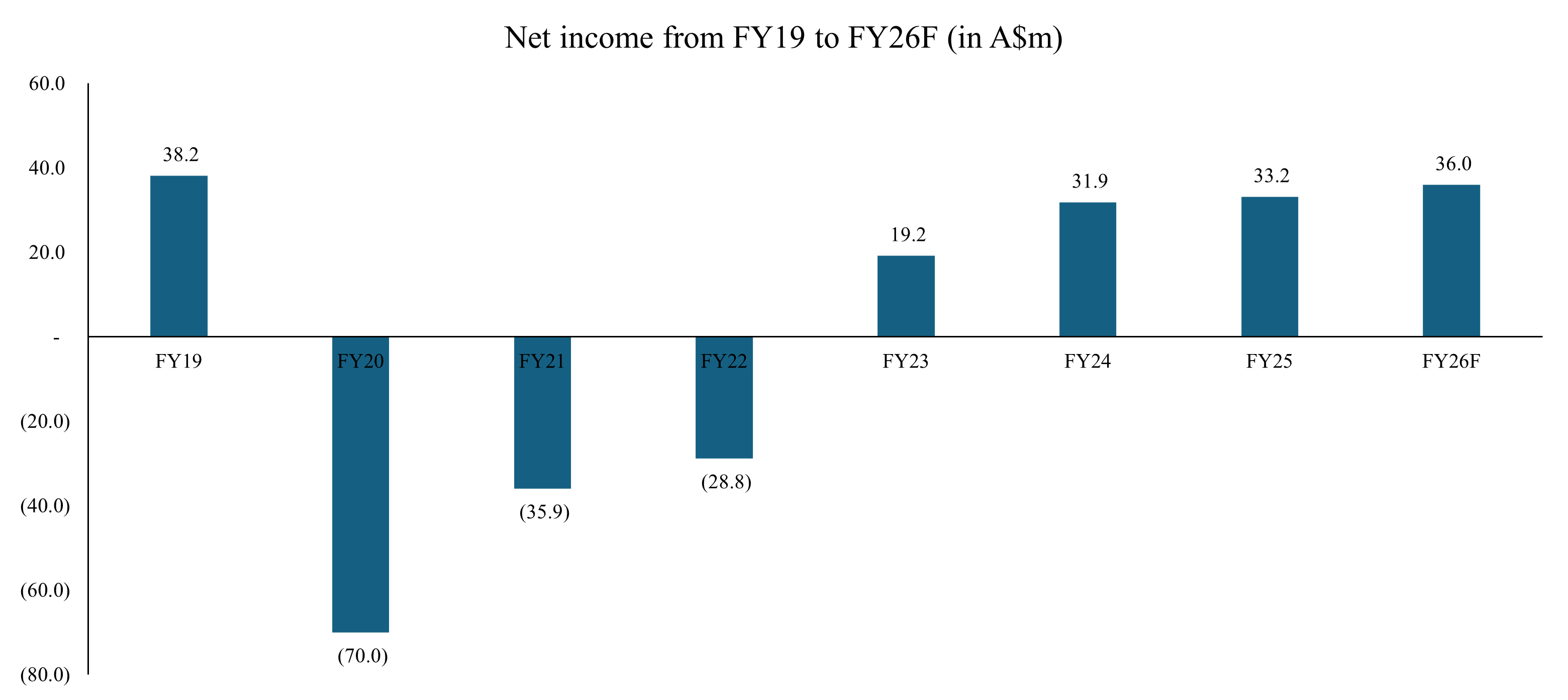

- Collapse (FY20-FY22): COVID-19 eviscerated travel—global lockdowns halted 90%+ of intl. bookings, with Australia's strict policies amplifying pain. HLO's wholesale/inbound (~50% revenue) was decimated, leading to $135M cumulative losses. The sector withdrew guidance en masse (e.g., Webjet/Flight Centre); HLO survived via $100M+ debt raise and asset sales.
- Recovery (FY23+): Earnings flipped positively as restrictions lifted, with TTV rebounding ~150% from lows by FY24. Domestic/leisure led (cruises +40% YoY), but HLO's recovery lagged peers—e.g., FLT's FY24 profit ~$200M vs. HLO's $32M—due to higher fixed costs (1,300+ stores) and less digital scale.
- Why not back to FY19 peak? Earnings are ~6% below pre-COVID despite revenue nearing levels, reflecting margin erosion (from 7% to ~6%) and one-offs (impairments). Projections show low-single-digit growth (0.9% pa earnings), vs. market's 11%, due to inflation, competition from online platforms, and HLO's other ambitions (e.g., Webjet stake). Recent FY25 upgrade to $58-62M EBITDA sparked a 17% share pop, but multiples stay cheap on skepticism.
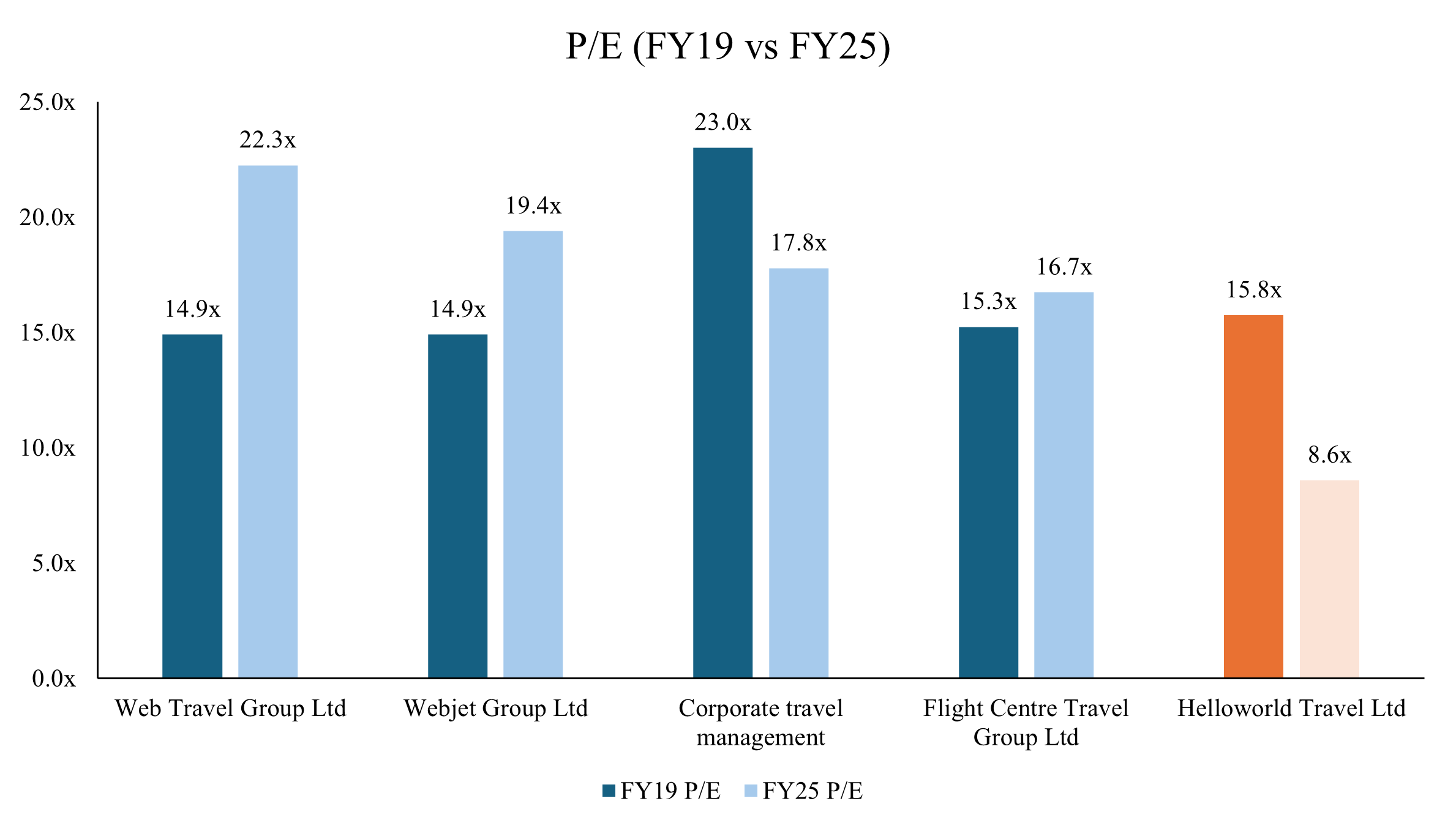
- HLO’s traded on 15.8x in FY19 P/E, contracting to just 8.6x FY25 P/E. While not directly comparable to peers here, this aligns with the earlier FY25/FY26 peer charts (HLO at 10.1x vs. peers' 19.1x) – earnings have been restored (see above), but P/E rating has not.
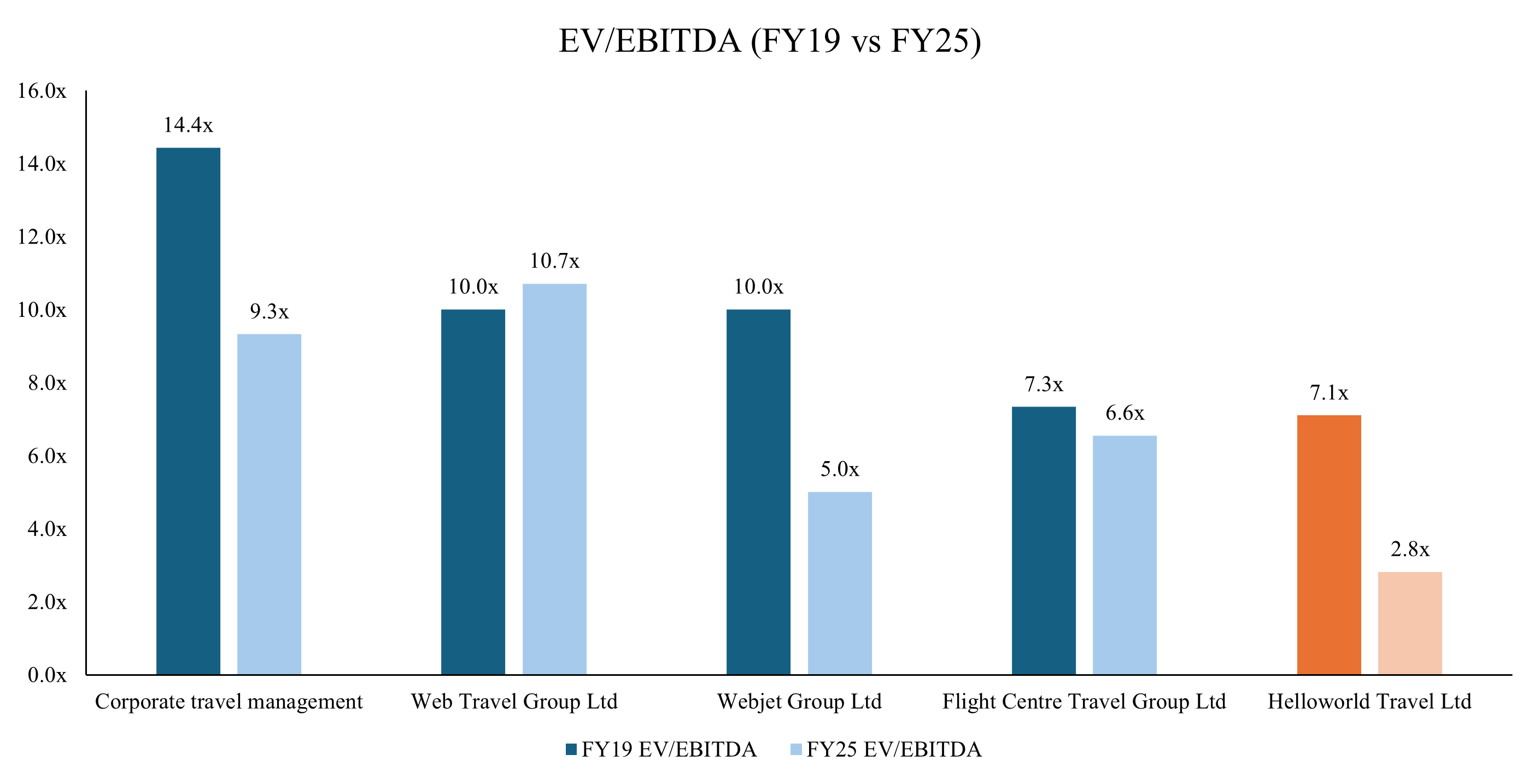
- At 2.8x FY25 EV/EBITDA, HLO trades ~61% below its own FY19 level and ~71% below the peer average FY25 (9.5x). This implies the market values HLO's EV at just 2.8 times expected FY25 EBITDA—far below historical norms for travel firms (typically 8-12x in stable times).
2.3 Helloworld is a value pick with growth, albeit moderate
It’s unusual to find growth and value together, and indeed we are not suggesting HLO is explosive tech like growth, but we have to acknowledge there is some short term upside here. We think the growth is driven by a combination of a cyclical macro driven rebound and some company specific factors. The Australian travel industry continues its post-pandemic recovery, but FY26 presents a mixed picture of moderating valuations, stable profitability, and uneven sales momentum across key players. Overall, the sector benefits from resilient corporate and international demand, though domestic softness and currency dynamics could temper upside.
Current vs forward P/E ratios
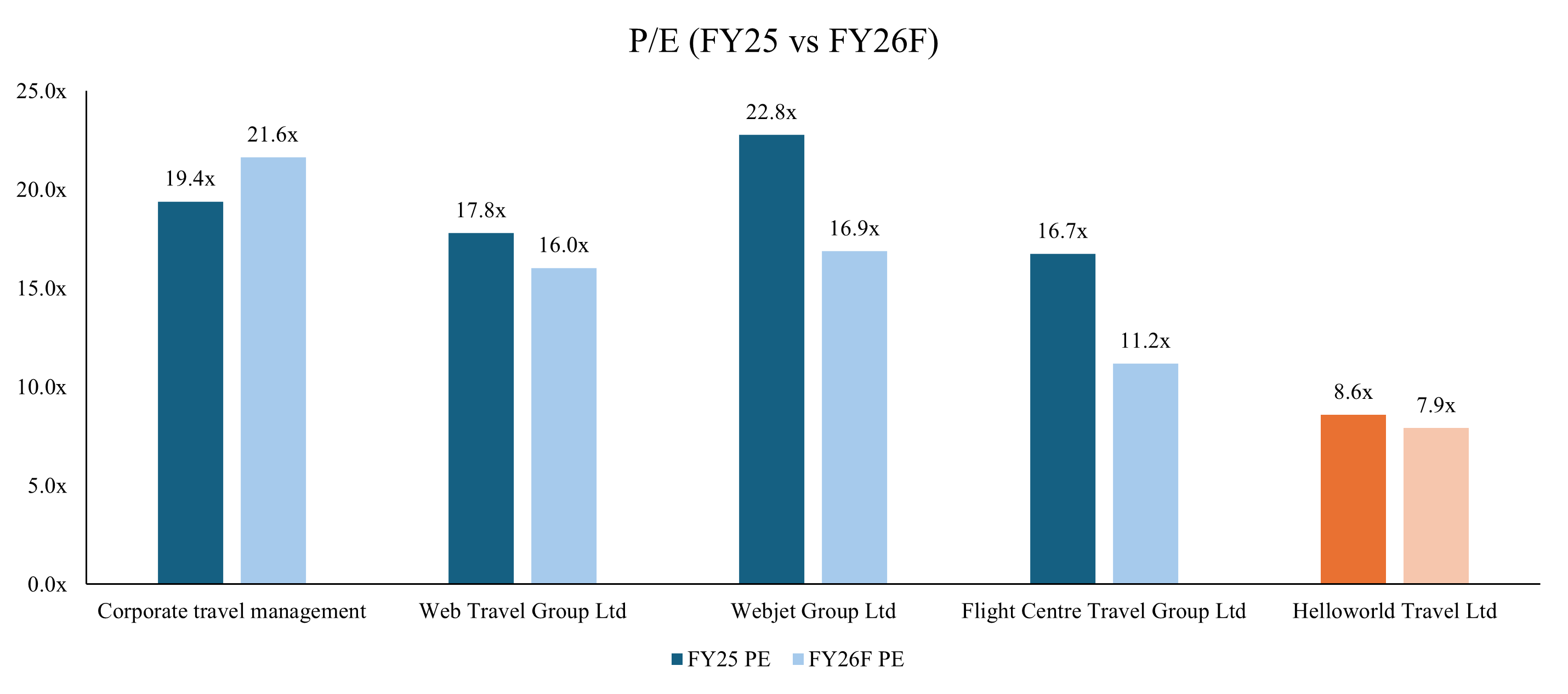
Current vs forward EV/EBITDA ratios

Sales growth: divergent paths with international tailwinds
Sales growth varies widely, with leisure-focused players like HLO leading amid cruise and long-haul demand, while corporate and domestic segments lag.

Historical trends of TTV: decline, rebound, and recent pullback
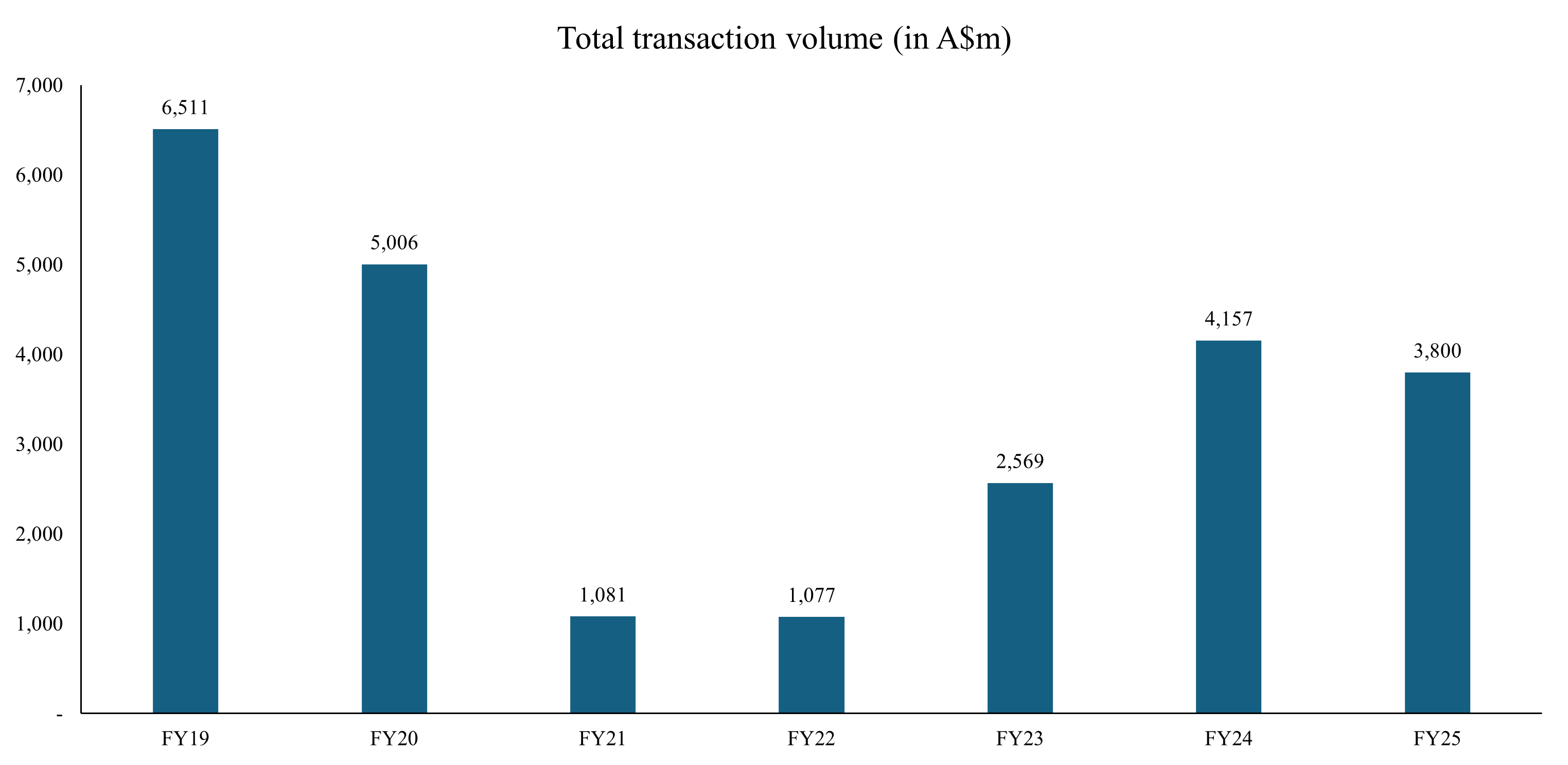
- Pre-pandemic peak (FY19): TTV hit A$6.5 billion, supported by strong global travel demand.
- Sharp decline (FY20-FY22): COVID-19 border closures and lockdowns caused a 75%+ drop by FY21, with TTV bottoming at c.A$1.1 billion. FY22 remained flat as recovery was uneven, with leisure travel lagging business segments.
- Strong rebound (FY23-FY24): TTV more than doubled from FY22 to FY23 (to A$2.6 billion), fueled by pent-up demand, eased restrictions, and a surge in international outbound travel from Australia. FY24 saw +62% growth to A$4.2 billion, aligning with industry-wide momentum (e.g., Australia's outbound tourism grew ~30% YoY in 2023-24 per Tourism Australia data). This period marked HLO's return to profitability, with underlying EBITDA turning positive.
- Recent decline (FY25 onward): TTV fell 9% to A$3.8 billion in FY25, despite the prior momentum.
This trajectory mirrors broader travel industry cycles: post-COVID boom followed by normalization, with external factors like inflation, geopolitical tensions (e.g., Middle East conflicts impacting routes), and economic slowdowns in key markets (Australia's household spending cooled in 2024-25).
3. Key risks
Market and economic risks
- Cyclical demand volatility: travel spending is highly sensitive to economic conditions, consumer confidence, and disposable income. FY25 saw an 8.7% revenue decline due to softening leisure demand and normalizing airfares post-inflation peaks. Consensus forecasts a further EPS dip of 11% in FY26 (to AU$0.19), driven by slower revenue growth (6.7% vs. historical 12% CAGR), if rate cuts (e.g., RBA to 3.85%) fail to materialize or household budgets tighten.[1]
- Geopolitical and external shocks: events like Middle East tensions or renewed pandemics could disrupt long-haul travel, which forms ~40% of HLO's TTV. Historical precedents (e.g., COVID-19 TTV plunge of 70–80%) highlight vulnerability, with potential for sudden cancellations or capacity cuts.[2]
- FX exposure: while a stronger AUD/weaker USD boosts margins on USD-sourced products (e.g., cruises), the reverse—a weakening AUD—could erode profitability by 3–5% on imports, amplifying costs in HLO's ANZ-centric model.
M&A and strategic Risks
- Integration and execution challenges: HLO's growth strategy hinges on bolt-ons, including the AU$70M acquisition of Express Travel Group (ETG, completed August 2023) and earlier deals like TravelEdge (AU$28M, 2019). While accretive (7x FY23 earnings multiple for ETG), poor integration risks cultural clashes, redundant costs, or delayed synergies—ETG added AU$50–70M TTV but required ongoing tech harmonization. Shareholder approvals (e.g., due to related-party ties with Sintack) add scrutiny, as seen in July 2023 EGM.[3] [4]
- Overpayment and valuation risk: aggressive bidding (e.g., ETG at 89¢/share, above rival BGH Capital's 80¢ offer) could lead to goodwill impairment if targets underperform in a downturn. Analysts note M&A as a "double-edged sword," boosting scale but inflating balance sheet risks if travel volumes stall.[5]
- Webjet M&A: while the combination of HLO and WJL would yield substantial synergies, there would be an obvious funding event should HLO be successful in acquiring the target. This may act as a small overhang on the share price. Additionally, given the multiple differential with WJT, the pro-forma MergeCo EPS numbers may not look favourable.
4 topics
1 stock mentioned

